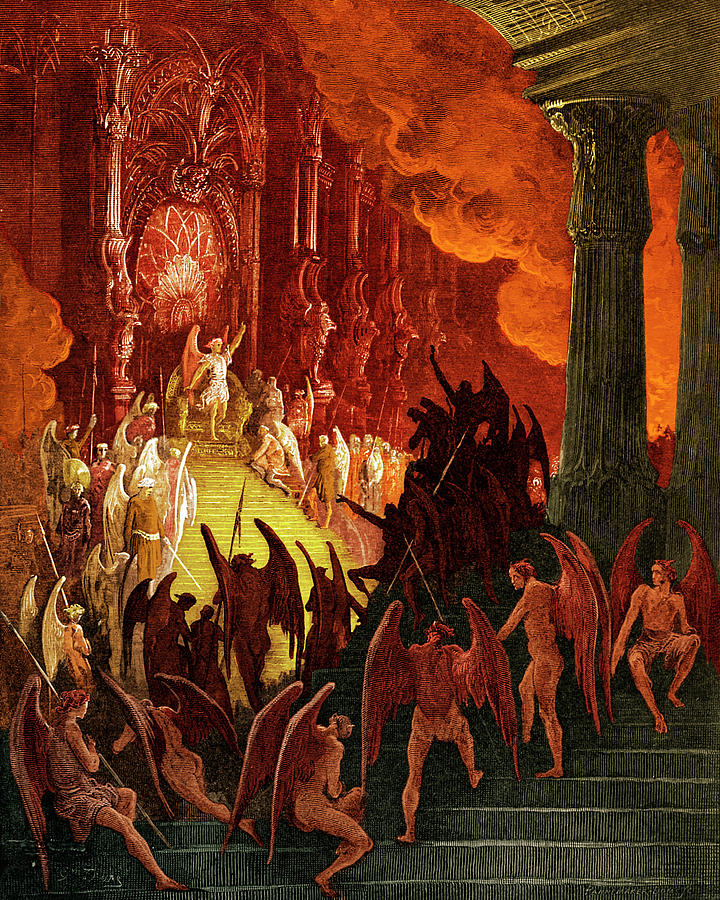
When she was 15, a few months before this painting, she gave birth to his daughter. Gauguin married her when she was 14 years old.

Real Oil Paints, Real Brushes, Real Artists, Real Art. © 2003 - 2022 - All Rights Reserved, original content, do not copy without permission. God points beyond the spectator’s field of vision, indicating that Adam and Eve should leave Eden. Accompanying God, there are three angels around him, one of them holding an ethereal sword. He is depicted as an older, muscular man with gray hair and a shining yellow halo on his head. On the upper left corner, the opposite of Satan, God is approaching the couple. Part of a snake overlaps with his body, indicating that he is shapeshifting. Satan’s complexion is darker, and his eyes shine with an orange light while he is blending with the cold vegetation.

Making an interesting visual arrangement, while one of Eve’s extremities, her hand, lies on Adam, her feet point to the Devil, who is leaving the scene on the lower-left corner through the woods. Both of their genitals are covered by leaves.

Her other hand holds Adam’s arm, looking away gloomily while holding his dark brown hair. She has an agonizing expression and covers her face with her left hand. In 1867, when this work was painted, Cabanel was already a long-time household name.Īt the picture’s center, Eve lies on the ground. While the earlier works by Cabanel were somewhat controversial by the Academic standard, such as the aforementioned Fallen Angel, in 1864, he not only became a teacher of the École des Beaux-Arts but also was awarded the medal of the Legion of Honor. As it is known by Fallen Angelas well, Cabanel seemed to be fascinated by John Milton’s account in the epic poem Paradise Lost, narrating the fall of humanity through Satan’s lenses. The work is a Religious narrative picture. Paradise Lost was painted on a vast vertical canvas.



 0 kommentar(er)
0 kommentar(er)
